Mental Training, Integration and Knowledge Relationship - Original Post by @JuliusC for Steemit
Happy Day my dear readers.
First of all I want to thank the receptivity I was subject to in my introduction, at the same time to apologize for not responding on time many received comments, this due to internet failures in my residential area. However, I want to share work experiences that make me think about the interconnection of the three elements that title this post: mental training, integration and the relationship between the knowledge we acquire. @JuliusC.
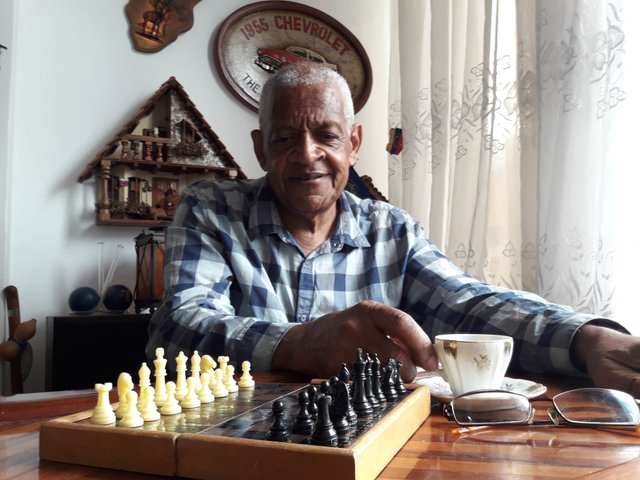

This mechanism allows an effective advance in the achievement of the learning objectives, from my own perspective. As a mental exercise I refer to the activity of remembering any event saved in memory, integration is the accumulation of knowledge derived from those events that have something in common, and the relationship is just the partial or total interconnection of those events with the new ones situations we face.
Commonly in my classes of Mechanics I (Static) and Mechanics II (Dynamics) in careers of Mechanical Engineering, Civil Engineering and Production Engineering of the Metropolitan University, I urge the students to the repeated practice of the cycle mentioned above , and I often can observe how students respond more precisely to the questions and problems of a specific area they have just learned when they are able to apply the mental mechanism described.
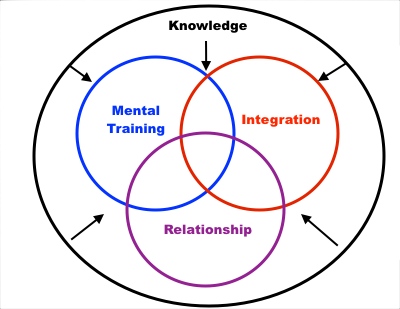
Diagram Setting made by myself.

To clarify what has been said, I tell you a situation lived in one of those courses. On Wednesday, June 13, the second partial test of this academic period was made. The results obtained by the group after the first partial exam, reduced the number of participants from 28 to 19, for various reasons of very varied nature.
Many times this event is conceived as "natural selection". Thus, the course continued with those students who obtained the best grades in that first confrontation. Taking in account the advance in the instruction and the maturation of the student through time, it was to be expected the improvement or consolidation accordingly to each situation the individual or collective academical growing.
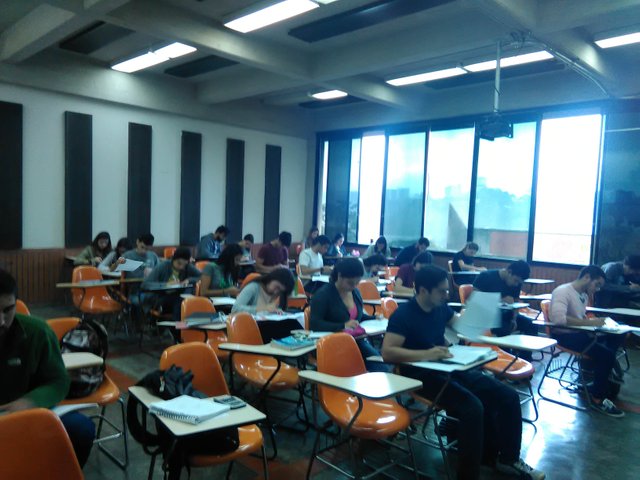

It is logical to think that with chronological development of the respective study program, the amount of contents of subjects the student must learn and manage in the future increases. However, in an instruction system with partial progressive evaluations it is possible to keep the participant "pending" of their continuous training, dosifying them with information, unlike the traditional systems of exclusive evaluations at the end of the course, in which partial review tests was neglected, making the preparation of the applicant for this great terminal test so heavy.
Nowadays almost universally, curricula of any professional career are generally subdivided into regular periods, either quarterly (12 weeks) or semi-annually (16 to 18 weeks on average), each containing an appropriate number of subjects to be studied simultaneously, organized in such a way that contents are sequential and of increasing difficulty (from the simplest to the most complex), having related contents or at least having an equal degree of complexity, and sequential chronological plans are established between the subjects with the purpose of "not learn the B without knowing the A" (said own).
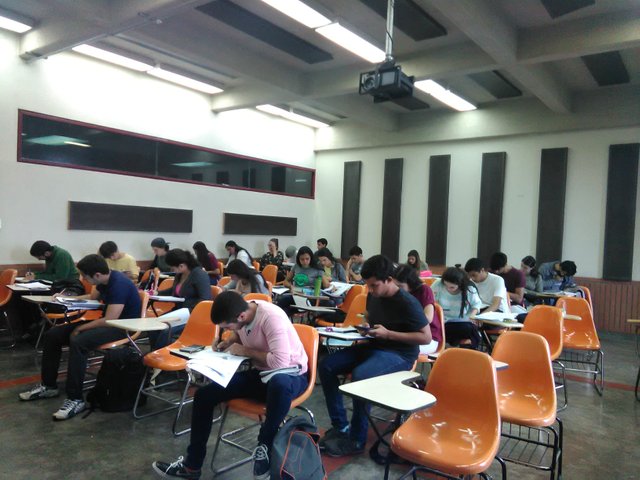

Thus, the students studied and approved Mechanics I-Static, before entering Mechanics II-Dynamics course, referred to the study of solid bodies at rest and in motion under the action of forces, respectively.
The structured examination consisted of three problems about Dynamics. The first two with value of six (6) points each and the third with eight (8) points , for a total of 20 points. The difficulty was estimated increasing from the first to the third, being even in this sense the first and the second.

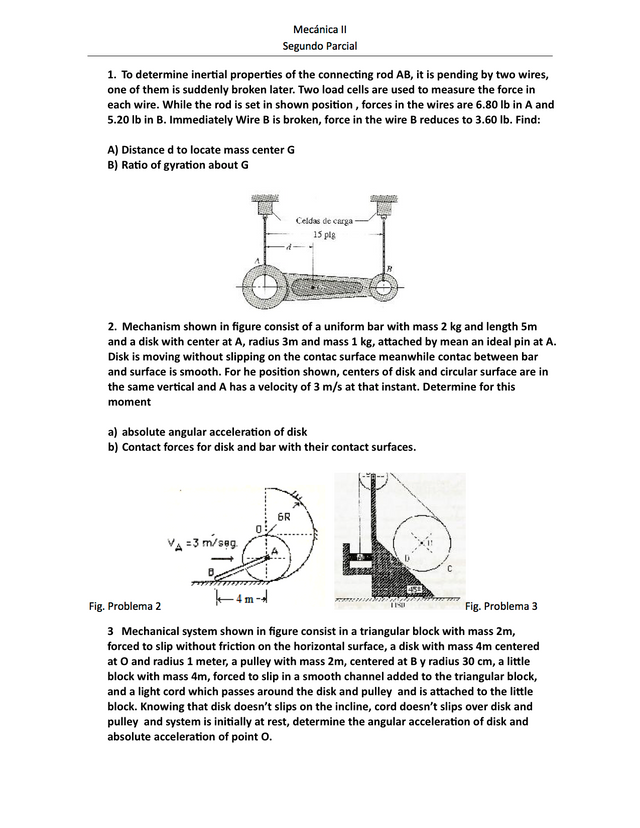
Problems taken from the book Mechanical Dynamics Engineering by Andrew Pytel and Jaan Kiusalaas.

First problem, part a) required the determination of the distance d that locates the center of mass or center of gravity of the rod suspended from the load cells, as indicated in the figure. A connecting rod is a mechanical element of motion transmission from a primary source, such as the crankshaft of a motor to a receiving source that will perform a job, such as piston, to generate required power to move a vehicle. Comparing with human body the brain is equivalent to the motor, the shoulder and forearm represent the crankshaft, the arm is the connecting rod and the hand carries the piston.

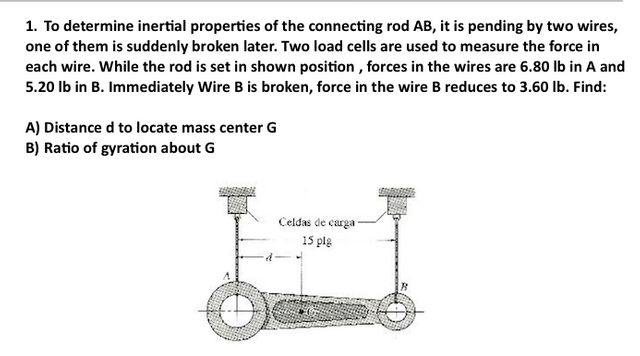
First question of the second partial exam. Problem taken from the book Mechanical Dynamics Engineering by Andrew Pytel and Jaan Kiusalaas.

Since the connecting rod in that first instant was in static equilibrium, determination of the unknown distance would be solved by applying conditions of static equilibrium, as done in Mechanics I. At least 80% of the students could place the question in context and responded positively: image of the rod held at both ends placed them in Static and reminded what was retained in their memories to develop the appropriate analysis and solution.


Operation of the connecting rod inside a motor.
Left Source: Giphy Right Source: Giphy

The rest of the test was exclusively located in the Dynamics itself, obtaining varied results depending on analytical and numerical abilities of each student, where undoubtedly the practice of the aforementioned cycle was evidenced to a greater or lesser degree.
In conclusion, remembering what we know, integrating interconnected knowledge and relating it to new events can effectively lead to satisfactory solutions.
FOLLOW!
UPVOTE!
REESTEEM!
UPVOTE!
REESTEEM!
Upvote/Resteem: https://steemit.com/news/@bible.com/6h36cq
Congratulations @juliusc! You have completed the following achievement on Steemit and have been rewarded with new badge(s) :
Click on the badge to view your Board of Honor.
If you no longer want to receive notifications, reply to this comment with the word
STOPCongratulations @juliusc! You have completed the following achievement on the Steem blockchain and have been rewarded with new badge(s) :
Click on the badge to view your Board of Honor.
If you no longer want to receive notifications, reply to this comment with the word
STOP